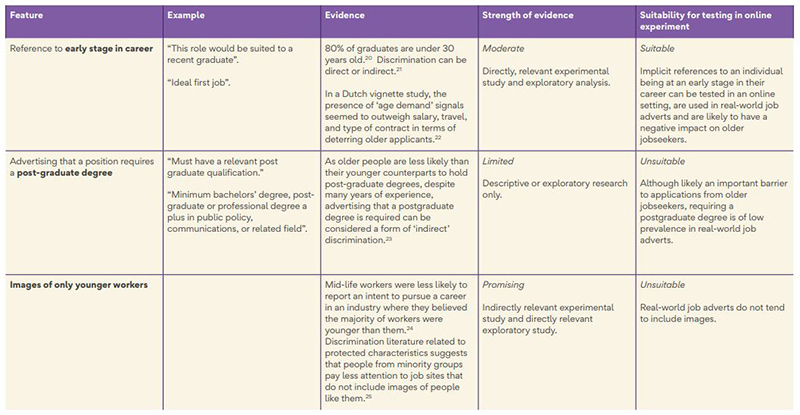Three Tips to Write Inclusive Job Descriptions That Will Attract Diverse Candidates
In recent years, many organizations seem to have realized the importance of implementing diversity and inclusion policies and initiatives to attract and retain diverse applicants. The attraction stage begins with writing inclusive job postings: no applicant should feel excluded and/or inadequate when they are considering to apply for a job.
“Those whose business it is to open doors, so often mistake and shut them.”
- George MacDonald -
Why you shouldn’t be looking for ninjas
Back in 2011, the study “Evidence That Gendered Wording in Job Advertisements Exists and Sustains Gender Inequality” [1] proposed that “gendered wording (i.e., masculine- and feminine-themed words, such as those associated with gender stereotypes) may be an unacknowledged, institutional-level mechanism of inequality maintenance”, and concluded that “when job advertisements were constructed to include more masculine than feminine wording, participants perceived more men within these occupations, and importantly, women found these jobs less appealing”: such findings findings seem to find validation in blog post shared by Buffer in 2015, where the company explained that the reason behind the removal of the word hacker from their job descriptions was that such term discouraged women from applying, and claimed that after the change was implemented they received 11 % of applicants who identified as female vs the initial 2% (on a related note, I recommend reading the article “When Women Stopped Coding” to get an understanding of how, around the mid-80s, the media helped turning computer science into a male dominated field).

(Image source: Freepik)
Similarly to Buffer, Thames Water reported that they saw a dramatic increase in applications from female applicants after the vacancy for sewage work technicians was modified to remove words such as “competitive”, “confident” and “champion”, together with the requirement that the ideal candidate “needs to have worked outdoors in a manual role”.
Some examples of gender coded words can be found at Gender Decoder, a tool that “checks job postings for the appearance of any of those words, then calculates the relative proportion of masculine-coded and feminine-coded words to reach an overall verdict on the gender-coding of the advert”.
Say it in plain (and readable) English
The findings of a 2020 study published in the Journal of Language and Social Psychology [2] suggest that “non-experts are unable to fully comprehend jargon-laden information due to their lack of understanding”: in a workplace scenario, this means that certain job postings may be off-putting to young applicants who are not familiar with technical jargon, colloquialisms, and industry specific acronyms (KPIs, SLAs, BAU, CPA, CRO, POC, OTE, etc.), to people with learning disabilities, to non-native English speakers (on a curious note, according to the 2017 American Express OPEN ‘Get Business Done’ Survey “88 percent of respondents admit to pretending to understand office jargon—even when they really have no idea what it means”).
If possible, try to avoid using cliché buzzwords, metaphors, and overly creative job titles - communication wizard, sales rockstar, etc. - that candidates might find confusing as well (check out Milkround’s ad jargon decoder to de-jargon your text).
Finally, make the posting easy to read for people with dyslexia by using sans serif fonts such as Arial, Comic Sans, Verdana, Tahoma, Century Gothic, Trebuchet, Calibri, Open Sans, and try to keep both sentences and paragraphs short.

(Image source: Freepik)
Don’t engage in age discrimination
According to a 2021 report by The Centre for Ageing Better (their guide “Good Recruitment for Older Workers” can be found at this link ):
- “Employers don’t consider age diversity to be ‘a problem’ in their organisations, despite evidence of a range of negative perceptions towards older applicants.”;
- “Few employers consider age when looking to improve diversity and inclusion in recruitment”.
It’s important to be aware of the fact that, by looking for “recent graduates”, for “innovative”, “energetic”, and “technologically savvy” candidates, for applicants with “minimum 8 years’ experience”, you might be treating some candidates unfavourably because of their age: in order to write more inclusive job postings, age related expressions should be kept to a minimum, and the focus should be on competencies and skills rather than on stereotypical attributes linked to age.
From the guide “Good Recruitment for Older Workers”:

Further Useful Resources and Tools:
- Guidelines for gender-inclusive language in English, United Nations
- How to write clearly (available in different languages), European Union
- Creating a dyslexia friendly workplace, British Dyslexia Association
- A Progressive’s Style GuideA Progressive’s Style Guide: Toward Harnessing Language in Support of Intersectionality and Cross-sector Power Building, Youth Power Hub
Sources
[1]Gaucher, Danielle & Friesen, Justin & Kay, Aaron. (2011). “Evidence That Gendered Wording in Job Advertisements Exists and Sustains Gender Inequality”. Journal of personality and social psychology. 101. 109-28. 10.1037/a0022530.
[2] Shulman HC, Dixon GN, Bullock OM, Colón Amill D. “The Effects of Jargon on Processing Fluency, Self-Perceptions, and Scientific Engagement. Journal of Language and Social Psychology”. 2020;39(5-6):579-597. doi: 10.1177/0261927X20902177

